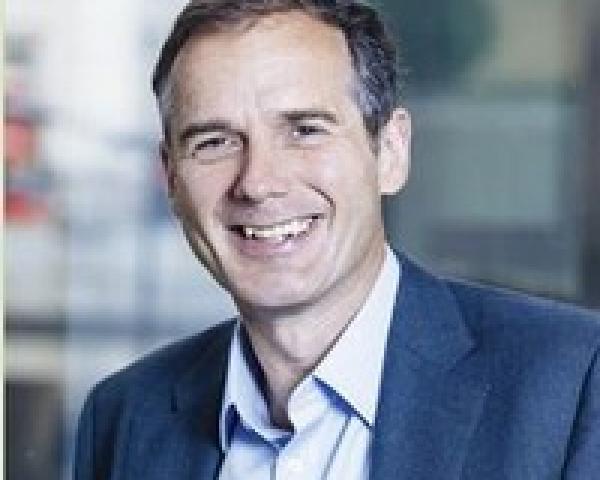Insurance has a fatal flaw. Few of us want to be reminded of how dangerous the world is. Cars crash, buildings burn, accidents happen. Usually to other people. So, unless we are highly sensitive to risk, unless we are unusually thoughtful about the future or unless regulation requires it, we don’t care much about insurance.
Recently, that all changed. The WHO declared COVID-19 a pandemic. Suddenly, we’d lost a big chunk of our savings, the rest of the world didn’t want to see us, most events planned for the coming months were canceled and the pandemic pushed everything else off the BBC evening news. Now we care about insurance.
For the last five years, the celebration of the emergence of innovation in insurance and the invention of insurtech has had to battle with a fundamental problem. How to change an established industry, reliant on legacy, which most people don’t really care too much about and which is, most of the time, good enough?
Successfully driving any change without a major shift in how we see the world is really hard. Often, we need a shock to the system. Our view of how our lives might change – for better or worse – radically alters if we directly experience disasters (personal, national or global). The emergence of new technology can also drive massive changes. Sometimes, very quickly. And not just recently. The Liverpool to Manchester Railway opened in 1830, and, within three months, over half the 26 horse-drawn stagecoaches on the route had gone out of business.
COVID-19 will bring many challenges, but it may be the reset button for insurance innovation. It's happened before.
Hurricane Andrew hit Florida in 1992, the most destructive hurricane ever to hit the state. The claims bankrupted 12 insurance companies. Soon after, the insurance rating agency A M Best required every insurer to prove that it had sufficient capital to withstand a “one-in-100-year” loss. No actuary had enough claims data to figure out what that meant. Andrew, and then the California Northridge Earthquake in 1994, gave birth to the specialized techniques of catastrophe modeling and led to the founding of RMS and AIR (now part of Verisk). The power of first-mover advantage, and the difficulty of building credible catastrophe risk models, is demonstrated by the fact that almost 30 years later both companies still dominant this space, with combined revenues of around $500 million.
Fast forward a decade or so. Despite 2019 being a record year in funding for insurance technology start-ups and scale-ups, with over $6 billion invested, it’s getting hard for some of the best-known business ideas to gain traction. Trov and Wrisk have announced recently they are shifting from being insurers (or, more accurately, MGAs) offering contents or device insurance, to becoming platforms. Their clients will now be other organizations with established insurance offerings or existing distribution and customers. Lesser-known companies have quietly packed up or are stuck in insurtech zombie land, never quite launching. Other well-known entrants such as Bought by Many and Lemonade appear to be doubling down on pet insurance. A perfectly acceptable strategy, but a future defined by our love of furry animals is not quite where were many people expected us to have got to by 2020.
See also: How Coronavirus Is Cutting Connections
Innovation is really hard. We may have heard of the H1N1 variant known as Spanish flu from 1918, but, until we started to experience the impact of COVID-19 virus, few of us gave much thought to the possibility that a pandemic was something we would need to deal with in our own lives. I haven’t done a comprehensive search of Google, but I’m struggling to find any insurtech-like company that has been building solutions to model the risk of pandemics.
A quick editorial note here. I write “insurtech-like” because there is no universal agreement on what the word actually means these days. I’m using it here as a shorthand for any company launched within the last 10 years or so that is using new technology or data or analytics to help with distribution, pricing, risk management, claims and probably a lot more. Please don’t quote me on that definition, though -- the topic probably merits a full article in itself, and I prefer Andy Yeoman of Concirrus’s definition from when I interviewed him recently: “Every insurance company is insurtech, some just have bad tech.” But I digress.
RMS started building pandemic models in 2012 to help price “excess mortality,” a polite actuarial term to describe too many people dying at once. The idea was to help insurance companies manage their capital and get access to tools to help them buy reinsurance more effectively. The problem was that the rather simplistic capital models accepted by the regulators gave a lower risk price, and less capital requirement, than the sophisticated RMS models, which ultimately would have led to more costs for the insurers. There wasn’t much interest from the catastrophe bond market, either. There are a couple of parametric bonds in place just now, but few companies really worried enough about pandemics to justify the cost of buying protection.
Metabiota, founded in 2008, uses real-time data collection and analytics to model epidemics. A partnership was announced with Munich Re in 2016 to develop models and insurance solutions for property and casualty insurance designed to mitigate the economic losses caused by epidemics. Marsh has tapped into the Metabiota relationship with Munich Re to create PathogenRX. According to its website, this is index-based insurance that offers protection to US clients against losses resulting from a pandemic or epidemic affecting international travel, study-abroad and research programs. I’m not sure how successful this has been (watch this space) but anyone that has bought the cover is going to feel pretty smart just now. Techcrunch mentions that Metabiota is also working with African Risk Capacity (ARC), the agency using parametric insurance to provide cover for a number of African countries.
By the way, if you don't already know what an epidemic is, it's a sudden increase in the number of cases of a disease, more than what's typically expected for the population in that area. A pandemic is an epidemic that has spread to several countries.
SparkBeyond, an artificial intelligence company formed in 2013 that I spoke to recently, has been commissioned by one major country to help it understand how to use analytics to minimize the pandemic spread. The company operates across many industries, so it's not really an insurtech (by whatever definition you use) but does hint at what could be on offer for those currently in the insurance world. (Check out the Instech London podcast to learn more.)
One system shock that may give the London market the jolt it needs is the potential for Lloyd’s to close for an extended period, forcing insurers and brokers to exchange risks electronically. The market shut for the first time recently for one day to test its resilience to a longer shut down, and at least one London company, Canopius, announced that it was asking all staff to work from home starting Monday, March 16. The recently launched PPL system for placing insurance contracts may not work as smoothly as it needs to, but it's unlikely that the Lloyd’s market could ever have contemplated working remotely without it.
As we start to understand the far-reaching implications of this pandemic, and adjust our lives to cope with it, remember that with every crisis comes an opportunity. I was working the phones recently, speaking to some of the experts from modeling, medicine, insurance, supply chain and AI to help put some context around the news and record their insights for a pandemic podcast special. I explored what has been done around analytics and what could still be done to give some pointers to those of you looking for new business ideas or even just consulting work. I asked what the insurance implications would be, and I discovered how vulnerable the supply chains are. I found out that there are massive amounts of data available related to the pandemic, much of which is open source, and I reveal where to go to get the best insights.
See also: Innovation: Top Down/Bottom Up
The podcast is number 72 on the Instech London series. It's 40 minutes long and a chance to hear what Robert Muir-Wood (RMS), Dr. Chris Martin (medical), Nick Wildgoose (supply chain), Sam Casey (Insurance Insider) and Alex Easaw (SparkBeyond) have to say. You can find it at any decent podcast channel (search "Instech London") or listen directly from here on the podcast section of the Instech London website (www.instech.london). Now with the added benefit of gaining Chartered Insurance Institute CPD credits while you listen.
Of one thing we can be sure, however the world looks in a few months, we are going to be thinking very differently about the threat of pandemics and what this means for insurance. Unfortunately, for many people and companies, insurance cover will be found to fall short of expectations in compensating losses, and when life returns to normal we might see a fundamental rethink of what insurance is all about. But maybe, at last, we can move beyond accepting that pet insurance is the best we can do when it comes to introducing innovation into insurance.








